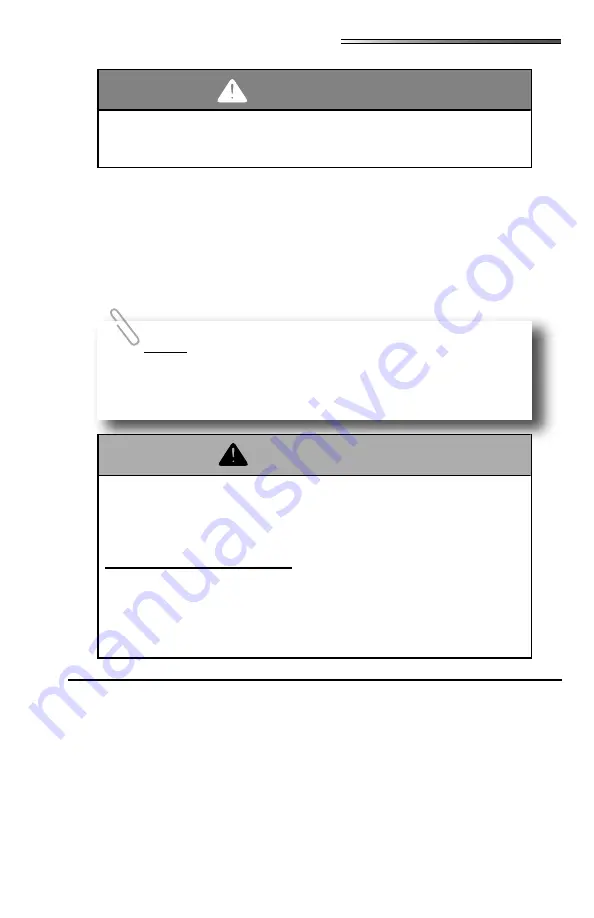
57
Section 4: Vehicle Operation
Tire Pressure
You must follow the manufacturer’s inflation guidelines for maximum load capacity;
under-inflation is just as dangerous as over-inflation.
Proper inflation should be monitored closely. Failure to do so could result in the overheating
of a tire causing a blowout. Inflation pressure should be as recommended by the tire manu
-
facturer or as the federal label for the recreation vehicle indicates.
When you are using your Recreational Vehicle, check inflation pressure weekly. Pressure
should be checked when the tires are cold. During travel, tires heat up and pressure increas-
es.
Do not bleed air from hot tires or your tires may then be under-inflated.
Failure to follow proper inflation guidelines may result in tire failure, which,
under certain circumstances can cause loss of vehicle control or accidents that
may result in property damage, bodily injury and/or death.
NOTE:
Cold tire inflation pressure is defined as a tire that has not been
used for three or more hours, or has been driven less than one mile. Tire
inflation pressure of a hot tire may show an increase of as much as 6 psi
over a cold tire.
It is recommended that the tire pressure be checked at the beginning of
each trip to obtain the maximum life of the tire. Follow the instructions
listed on the Federal Certification label, to determine the correct tire pres
-
sure. Under-inflation may cause tire failures and swaying resulting in loss
of control, injury, death or property damage.
TOWABLE PRODUCTS ONLY
Towable recreation vehicles are equipped with special trailer (ST) tires
that have a maximum speed rating of 65 MPH (104 km/h).
You should
not exceed this speed rating.
Exceeding the tire speed rating may result
in tire failure, which could lead to an accident causing serious injury or
death.
Changing A Tire
If you experience a flat tire on your recreational vehicle while driving, gradually decrease
your speed and move the recreational vehicle to a safe place on the side of the road.
1. Keep the recreational vehicle attached to the tow vehicle. Block the tire on the opposite
side of the recreational vehicle from the tire you are changing.
2. Loosen the wheel lug on the tire you are changing before jacking up the vehicle. DO
NOT remove the lug nuts; only loosen them for ease of removal when the tire is off
the ground.
3. Locate the mainframe rail of the trailer (it spans from front-to-back just inside the tires).
4. To raise the recreational vehicle, place the jack (hydraulic or screw) under the main
frame rail. It must be just ahead of the front tire or just behind the rear tire.
Содержание Jayco TALON 2021
Страница 1: ...Owner s Manual Fifth Wheel Toy Hauler 0304307 2021 A subsidiary of Thor Industries Inc 2021...
Страница 2: ......
Страница 10: ...8...
Страница 24: ...22 Section 1 Warranty Service Notes...
Страница 34: ...32 Section 2 Occupant Safety Notes...
Страница 42: ...40 Section 3 Pre Travel Information Notes...
Страница 74: ...72 Section 4 Vehicle Operation Notes...
Страница 116: ...114 Section 6 Electrical System Notes...
Страница 162: ...160 Section 8 Plumbing System Notes...
Страница 170: ...168 Section 8 Plumbing System Notes...
Страница 204: ...202 Section 14 Travel Camping Storage Checklists Notes...
Страница 209: ...207 Section 15 Additional Information Notes...




































